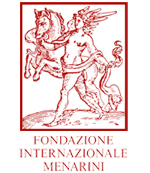
Press release
One in three Italians suffers from high blood pressure. A condition that is often underestimated in women and during pregnancy
Brescia, 16 January 2017 - High blood pressure is one of the major risks of cardiovascular mortality today. One Italian in three has high blood pressure levels, a situation that has implications that are not only medical but also social and economic. This was the message of Enrico Agabiti Rosei, Director of the Department of Medicine of the Azienda Spedali Civili of Brescia and President of the ESH, European Society of Hypertension, on opening the congress entitled “ESH update on hypertension and cardiovascular protection”, promoted in Brescia by the Fondazione Internazionale Menarini and chaired by Agabiti Rosei.
“We are talking about a condition involving the cardiovascular system that can give rise to serious consequences, especially in the arteries, heart, kidneys and brain. It is estimated that it causes more than eight million deaths in the world each year. The European Society of Hypertension pays great attention to this scenario and is committed to improving the control of blood pressure among the general population. One of the main tools is information for citizens and doctors alike. And one of the most important appointments this year is precisely this congress in Brescia”. Among the principal topics, the best treatment for reducing cardiovascular risk, the analysis of new risk factors, the association between cardiovascular problems and other conditions, high blood pressure in children and adolescents, and the differences in treatment between men and women.
“Women do not perceive cardiovascular diseases as an important health problem, despite evidence that they have a greater risk of dying from heart diseases related to blood pressure than men”, warns Maria Lorenza Muiesan, Department of Clinical and Experimental Science of the University of Brescia. “A correct prevention strategy should include greater knowledge of the various risk factors in women, such as high blood pressure during pregnancy and the presence of concomitant autoimmune diseases, such as lupus erythematosus. The female gender represents one of the principal factors connected to a higher prevalence of “white-coat hypertension”, characterised by a stable increase in blood pressure values when measured in a clinical environment and the almost total normalisation of the blood pressure values when measured outside the clinical context. Lastly, the progressive loss of the protective factor provided by the female hormones must not be overlooked, a reduction that takes place in the post-menopause period with a drop in the estrogens”. Another situation in which high blood pressure can cause problems is pregnancy.
“High blood pressure is present in approximately one out of ten pregnancies”, confirms Renata Cifkova, of the Cardiovascular Prevention Centre of the University of Prague, Czech Republic.
“It is important to distinguish between the cases in which the woman is already hypertensive before becoming pregnant, and those where it is precisely the pregnancy that induces high blood pressure (so-called gestational hypertension). The guidelines of the European Society of Hypertension recommend pharmacological treatment of pregnant women if their blood pressure is higher than 150 mmHg, while anti-hypertensive treatment must already be started at a level of 140 mmHg if the woman suffers from gestational hypertension. Women with a moderate to high risk of preeclampsia should take 75 mg of aspirin every day during the twelve weeks prior to giving birth. Women who have high blood pressure during their first pregnancy have a greater risk of the same in following pregnancies. The earlier high blood pressure occurs in the first pregnancy, the greater the risk of high blood pressure during a second pregnancy. Women who develop gestational hypertension or preeclampsia have a greater risk of developing high blood pressure, stroke or heart attack in the future. For this reason, women are advised to follow a healthy lifestyle and have periodic checkups, preferably once a year, to measure their blood pressure and keep other metabolic factors under control”.
Finally, Prof. Agabiti Rosei spoke about the multifaceted problem of poor compliance with therapy. “This is an issue with many aspects that need to be addressed. The doctor-patient relationship cannot be limited to too narrow time frames and it requires precise motivation by the doctor. The system should also encourage the appropriate use of pharmaceutical products and if possible solve the various economic and organisational problems. All of this is often not sufficient however, and therefore more incisive systems must be searched for in order to favour compliance with the treatment in a regular manner, for example with the aid of telemedicine in various ways. It is also possible to simplify the therapy, in particular with the reduction of the number of tablets to be taken”.
This opinion is also shared by Michel Burnier, of the Nephrology and Hypertension Service of the University of Lausanne, Switzerland. “Today the clinical management of high blood pressure recommends a correct lifestyle, with advice regarding weight loss, a lower salt intake, and increased physical exercise, all associated with the administration of pharmaceutical products to lower blood pressure”, comments Burnier. “However the patient’s compliance with the doctor’s instructions represents the determining factor in the success of the therapy, and the lifestyle changes require long-term perseverance in order to be effective. The treatment must be scrupulously followed at the same time, while according to various studies; there is a very high percentage of patients who stop taking the pharmaceutical products. This is due to the fact that high blood pressure is often asymptomatic, and also because the patients are frequently suffering from various other diseases as well and are forced to take a lot of drugs. In this perspective, the availability of combination drugs against high blood pressure, and therefore the possibility of being able to take just one single tablet could be an additional tool for encouraging the patient to continue with the treatment”.